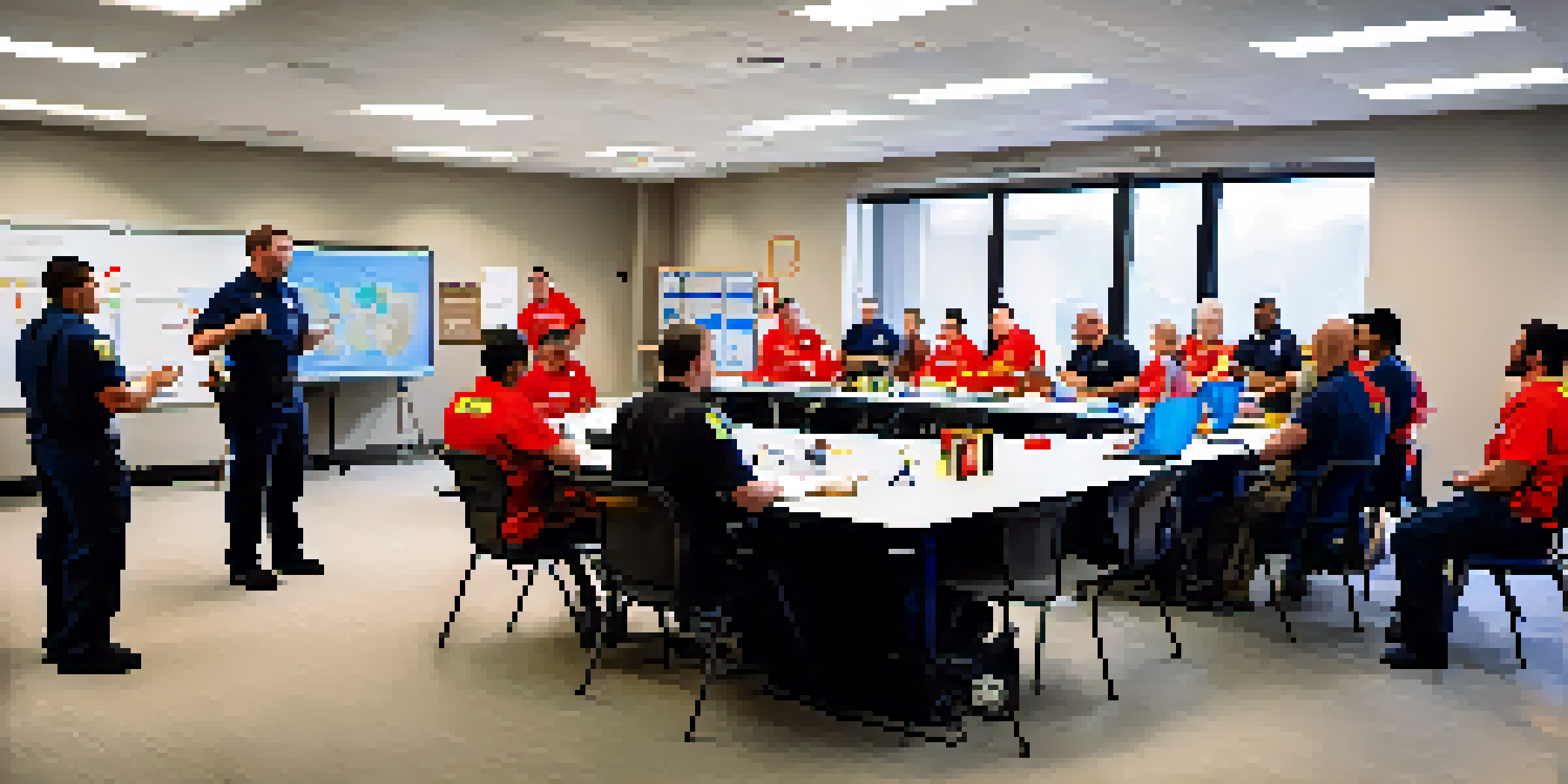Building a Culture of Preparedness: Employee Training Essentials

Understanding the Importance of Preparedness Training
In today's fast-paced world, organizations face various challenges, from natural disasters to cybersecurity threats. Building a culture of preparedness means prioritizing employee training to navigate these challenges effectively. When employees understand the potential risks, they can respond swiftly and confidently, minimizing disruptions.
An ounce of prevention is worth a pound of cure.
Preparedness training is not just about compliance; it’s about empowering employees. By equipping them with the right skills and knowledge, organizations foster a proactive mindset. Employees become not only aware of the potential dangers but also prepared to take action at a moment's notice.
Creating a sense of urgency around preparedness can also enhance team cohesion. When employees feel responsible for their safety and that of their colleagues, it fosters collaboration and strengthens workplace relationships. This culture of shared responsibility can prove invaluable during a crisis.
Identifying Key Training Topics for Employees
To build an effective preparedness training program, it’s essential to identify key topics that resonate with your workforce. Common areas include emergency response procedures, communication protocols, and first aid training. Tailoring these topics to your organization’s specific risks can make the training more relevant and impactful.

In addition to standard topics, consider incorporating scenario-based training. This approach allows employees to practice their skills in realistic situations, enhancing retention and confidence. For example, conducting fire drills or cybersecurity simulations can prepare employees for real-life emergencies.
Empower Employees Through Training
Preparedness training equips employees with the skills and knowledge needed to respond effectively to various challenges.
Lastly, don't forget about mental health and wellness training. In times of crisis, employee well-being is paramount. Training that focuses on stress management and mental resilience can ensure that employees are not only physically prepared but also emotionally equipped to handle emergencies.
Creating Engaging Training Programs
Engagement is key when it comes to training. Traditional lectures can often lead to disengagement, so consider more interactive methods. Workshops, simulations, and role-playing activities can make training sessions more dynamic and enjoyable for employees.
The best way to predict the future is to create it.
Incorporating technology can also enhance the learning experience. E-learning modules, webinars, and mobile applications provide flexibility and accessibility. Employees can learn at their own pace, ensuring better comprehension and retention of vital information.
Don’t underestimate the power of gamification. By turning training into a game with rewards and challenges, you can motivate employees to participate actively. This not only makes learning fun but also fosters a competitive spirit that can accelerate skill development.
Utilizing Real-Life Scenarios in Training
Real-life scenarios can significantly enhance the effectiveness of preparedness training. By simulating actual events, employees can practice their responses in a controlled environment. This hands-on approach helps bridge the gap between theory and practice, leading to better preparedness.
For example, consider conducting a mock evacuation drill to familiarize employees with exit routes and safety protocols. Such drills can highlight areas for improvement and ensure everyone knows their role during an actual emergency. The experience gained from these scenarios can be invaluable.
Engage with Interactive Methods
Using interactive training methods, such as simulations and gamification, enhances learning and keeps employees engaged.
Moreover, discussing past incidents within the organization or industry can provide important lessons. Sharing stories about what went wrong and what went right can foster a culture of learning and improvement. This transparency encourages open dialogue and empowers employees to contribute to ongoing preparedness efforts.
The Role of Leadership in Promoting Preparedness
Leadership plays a crucial role in establishing a culture of preparedness. When leaders prioritize training and actively participate in preparedness initiatives, it sends a powerful message to employees. Their involvement not only demonstrates commitment but also inspires others to engage.
By setting clear expectations and providing adequate resources, leaders can empower teams to take preparedness seriously. Regular communication about the importance of training and its impact on safety can reinforce its value within the organization. This top-down approach helps embed preparedness into the company culture.
Additionally, leaders should model preparedness behaviors themselves. Whether it's participating in drills or sharing their own experiences during training, their actions can motivate employees to follow suit. A visible commitment from leadership can significantly enhance employee buy-in and participation.
Evaluating the Effectiveness of Training Programs
To ensure your training programs are effective, regular evaluation is essential. Collecting feedback from employees can provide valuable insights into what works and what doesn't. Surveys or informal discussions can help gauge employee confidence and readiness after training sessions.
Moreover, tracking performance during drills and real-life emergencies can highlight areas for improvement. If employees struggle during a drill, it may indicate a need for additional training in specific areas. Continuous assessment allows organizations to adapt their training strategies to meet evolving needs.
Leadership Drives Preparedness Culture
Active involvement of leadership in preparedness initiatives inspires employees and reinforces the importance of training.
Finally, consider benchmarking against industry standards or best practices. Learning from successful organizations can help you refine your training programs. This commitment to improvement ensures that your preparedness culture remains robust and effective over time.
Cultivating a Continuous Learning Environment
A culture of preparedness should not be static; it needs to evolve. Cultivating a continuous learning environment encourages employees to stay informed about new risks and best practices. Regularly updating training materials and offering refresher courses can keep preparedness at the forefront.
Encouraging employees to share knowledge and experiences can also enhance learning. Establishing peer-to-peer training sessions or discussion groups allows employees to learn from one another. This collaborative approach fosters a sense of community and shared responsibility.

Lastly, consider integrating preparedness training into onboarding processes. By introducing new hires to your culture of preparedness from day one, you set the foundation for a proactive mindset. This ensures that preparedness becomes an integral part of your organization's identity.